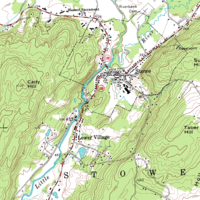
Photo from wikipedia
Abstract Agricultural land abandonment is a dynamic process characterized by both significant spectral variability and spectral similarity to areas of agricultural land. The identification of abandoned agricultural land (AAL) based… Click to show full abstract
Abstract Agricultural land abandonment is a dynamic process characterized by both significant spectral variability and spectral similarity to areas of agricultural land. The identification of abandoned agricultural land (AAL) based on remote sensing data must be preceded by field surveys that are focused on the acquisition of the physiognomic characteristics (the composition of species, height of vegetation, textures, and clustering into patterns) of these areas. This study aims to document the physiognomic and spectral differences between AAL and other land cover/land use classes in Slovakia. The Normalized Difference Vegetation Index (NDVI), derived from Sentinel-2 time series for vegetation from April to September 2018, was applied. NDVI values were calculated for each Sentinel-2 scene, and NDVI profiles for selected samples were used to create phenological profiles for each AAL and land cover/land use class. The dispersion of the NDVI values for these classes, their median, and the root mean square error between NDVI data show that overgrowth by herbaceous plants is characterized by more significant dynamics (0.40–0.75), resulting in better spectral discriminability than classes overgrown by shrubs and trees (0.70–0.80). Field survey data are a fundamental prerequisite for the correct explanation of the discriminability of these AAL classes.
Journal Title: Canadian Journal of Remote Sensing
Year Published: 2021
Link to full text (if available)
Share on Social Media: Sign Up to like & get
recommendations!